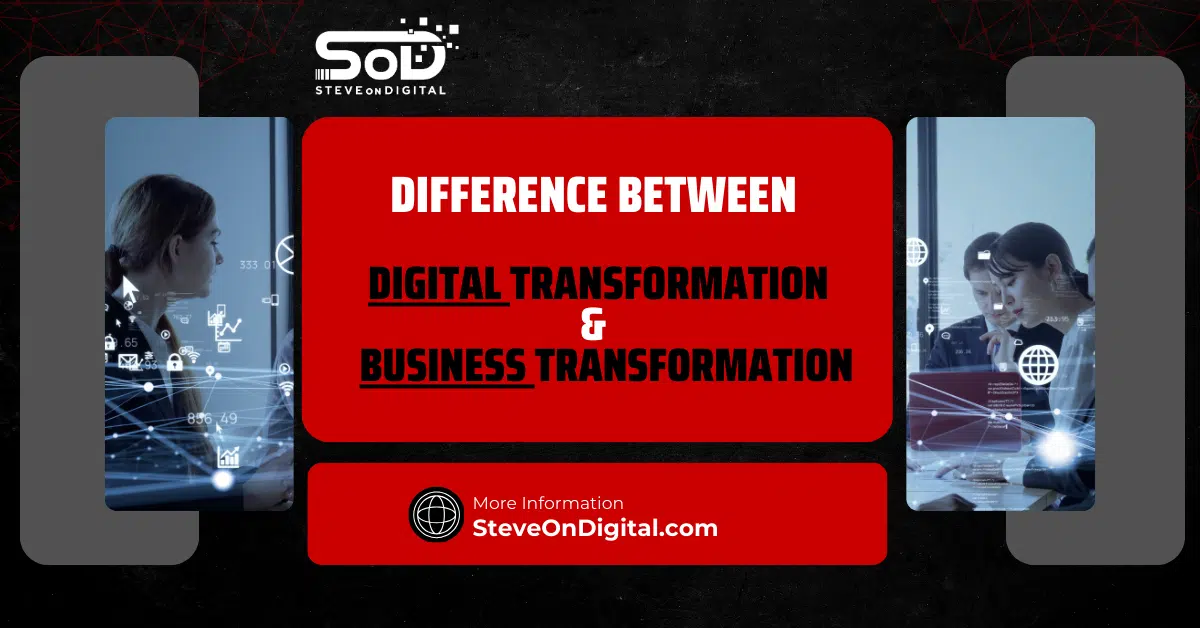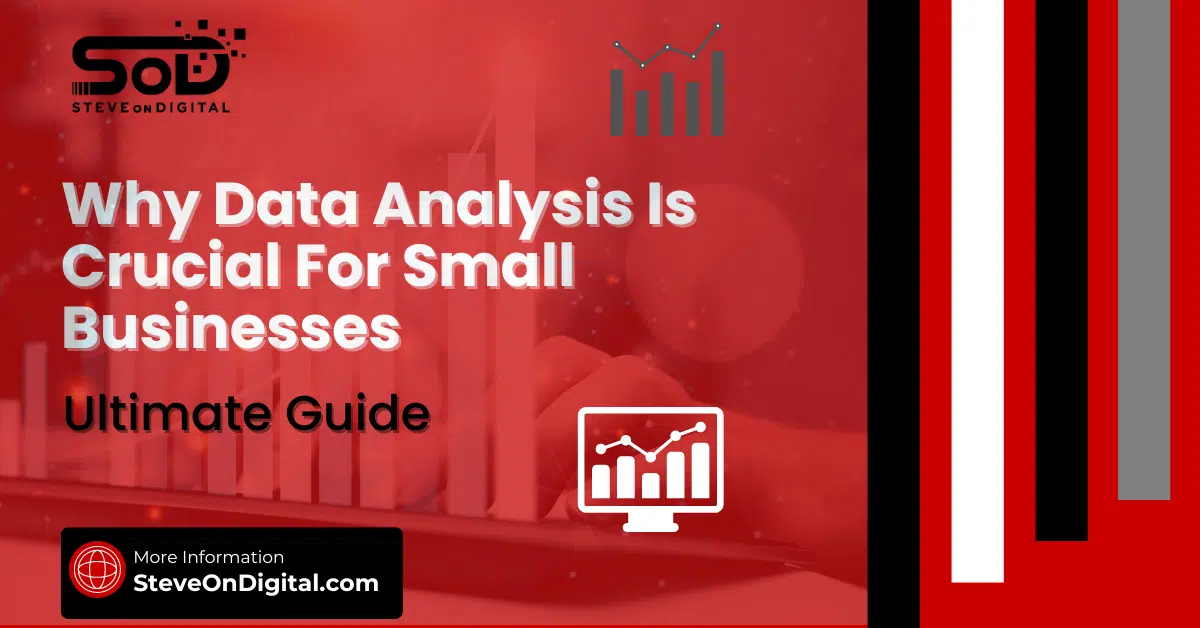To effectively market a small business, start by understanding your target audience and creating a solid marketing strategy. Use social media, content marketing, and paid ads to reach potential customers and boost brand awareness.
Effective marketing is vital for small businesses to thrive and grow. Reaching potential customers and retaining existing ones can make or break your business. A comprehensive small business marketing strategy is essential for building brand awareness, increasing sales, and achieving long-term success.
I’m Steve, a digital transformation expert with a strong background in electrical engineering, an MBA, and a master’s in Project Management. I excel at helping SMEs navigate the digital landscape with practical insights. Let’s begin!
Understanding Your Target Audience
Knowing your target audience is the foundation of any successful marketing strategy. When you know who your potential customers are, you can adjust your marketing efforts to match their needs and preferences.
Defining Your Target Market
Determining your target market involves identifying the specific group of people who are most likely to buy your products or services. Consider factors like age, gender, income, location, and interests. By narrowing down your target market, you can focus your resources on those most likely to become paying customers.
Market Research Techniques
Conducting market research is crucial for gathering insights about your potential customers. Use surveys, interviews, and focus groups to collect data. Analyzing your competitors can also provide valuable information about what works and what doesn’t in your industry.
Creating Customer Personas
Customer personas are detailed profiles that represent different segments of your target audience. They help you visualize and understand your customers’ needs, behaviors, and motivations. When creating personas, include demographic details, pain points, and buying habits. This personalized approach can guide your marketing messages and improve engagement.
Crafting a Small Business Marketing Strategy
A well-rounded marketing strategy encompasses various elements tailored to your business needs and goals.
Setting Marketing Goals
Clear, achievable marketing goals provide direction and a way to measure success. Goals can include growing website traffic, acquiring new leads, or enhancing social media engagement. Make sure your goals are Specific, Measurable, Achievable, Relevant, and Time-bound (SMART).
| Goal | Specific | Measurable | Achievable | Relevant | Time-bound |
|---|---|---|---|---|---|
| Increase Website Traffic | Increase monthly visitors | By 20% (from 1,000 to 1,200) | Yes | Aligns with growth strategy | Within 3 months |
| Generate Leads | Acquire new leads | 50 new leads per month | Yes | Supports sales team | Within 6 months |
| Boost Social Media Engagement | Increase post engagement | By 30% (likes, shares, comments) | Yes | Enhances online presence | Within 2 months |
Developing a Marketing Plan
A comprehensive marketing plan outlines the strategies and tactics you’ll use to reach your marketing goals. It should include details on your target audience, marketing channels, and content strategy. Planning ahead ensures you stay organized and focused on your objectives.
Budgeting for Marketing Efforts
Allocating a budget effectively is crucial for maximizing your marketing efforts. Determine how much you can spend on different marketing initiatives, such as advertising, content creation, and social media management. Prioritize spending based on what delivers the best return on investment (ROI).
Building a Strong Online Presence
A robust online presence is essential for reaching a wider audience and establishing credibility. Here are the steps to achieve it.
Creating a Professional-Looking Website
Your website is often the first impression potential customers have of your business. Ensure it is professional, user-friendly, and mobile-responsive. Include clear calls-to-action (CTAs), contact information, and an easy-to-navigate layout. High-quality images and relevant content can enhance user experience and encourage visitors to stay longer.
Search Engine Optimization (SEO)
Search engine optimization (SEO) is the practice of improving your website to achieve higher rankings in search engine results. Start with keyword research to identify the terms your target audience is searching for. Incorporate these keywords naturally into your website content, meta descriptions, and headers. Additionally, focus on technical SEO aspects like page speed, mobile optimization, and secure connections (HTTPS).
Managing Your Google Business Profile
A Google Business Profile is essential for local visibility. It helps your business appear in local search results and Google Maps. Make sure your profile includes accurate business information such as address, phone number, and hours of operation. Encourage satisfied customers to leave reviews, as positive feedback can enhance your reputation and attract more customers.
Leveraging Social Media Platforms
Social media platforms are indispensable for small business marketing. They offer an affordable and effective way to connect with potential customers and build a loyal customer base. I’ve seen firsthand how social media can transform a small business’s reach and engagement.
Choosing the Right Social Media Channels
Selecting the right social media platforms for your business is crucial. Different platforms attract different audiences. For instance, Facebook is great for reaching a broad audience, while Instagram is perfect for visual content and younger demographics. LinkedIn works best for B2B marketing. Start by identifying where your target audience spends most of their time online.
| Platform | Best For | Audience | Content Type |
|---|---|---|---|
| Broad audience, local targeting | Adults 25-55 | Posts, ads, events, videos | |
| Visual content, younger demographics | Teens to adults 18-35 | Photos, stories, reels, ads | |
| B2B marketing, professional networking | Professionals, businesses | Articles, job postings, networking | |
| Real-time updates, news | Adults 18-49 | Tweets, news updates, promotions |
Creating Engaging Social Media Content
Creating engaging content is essential for keeping your social media presence active and interactive. Share a mix of content types, including images, videos, articles, and polls. My experience shows that authentic, behind-the-scenes content often gets the most engagement. Be consistent with your posting schedule and always interact with your audience by responding to comments and messages.
Utilizing Social Media Advertising
Running effective social media ad campaigns can significantly increase your reach. Platforms like Facebook and Instagram offer highly targeted advertising options. You can target ads based on demographics, interests, and behavior. I recommend starting with a small budget and testing different ad creatives to see what resonates with your audience. Always track your ad performance and adjust your strategies accordingly.
Content Marketing Strategies
Content marketing involves producing valuable and relevant content to attract and engage your target audience. It helps build trust and positions your business as an authority in your industry.
Blogging for Business
Maintaining a business blog is a powerful content marketing strategy. Regularly publishing quality blog posts can improve your website’s SEO and drive organic traffic. Write about topics that interest your target audience and solve their problems. Use keyword research to find popular search terms related to your business. Personal anecdotes and real-life examples can make your blog posts more relatable and engaging.
Video Marketing
Video marketing is increasingly popular and effective. It allows you to convey your message more dynamically. Create videos to showcase your products, share customer testimonials, or offer valuable industry tips. Platforms like YouTube and social media apps are great for sharing videos. I’ve found that even simple, authentic videos can have a significant impact.
Email Marketing Campaigns
Email marketing is a direct way to communicate with your audience. Building an email list of customers and potential interested customers is essential. Send regular newsletters with updates, promotions, and valuable content. Personalize your emails to increase engagement. Tools like Mailchimp or Constant Contact can help you manage your campaigns effectively.
Utilizing Paid Advertising
Paid advertising can give your small business a quick boost by driving immediate traffic and leads.
Google Ads
Google Ads allows you to reach people actively searching for products or services like yours. Create targeted ad campaigns using relevant keywords. I recommend using a mix of search ads and display ads to maximize your reach. Monitor your campaigns closely and optimize them based on performance data.
Social Media Ads
Social media ads are highly effective for targeting specific audiences. Platforms like Facebook, Instagram, and LinkedIn offer robust advertising tools. You can run ads for various objectives, such as brand awareness, website traffic, or lead generation. Start with a clear goal and a well-defined audience to ensure your ads reach the right people.
Display Advertising
Display advertising involves placing banner ads on websites across the internet. This type of advertising is excellent for building brand awareness and retargeting visitors who have previously visited your site. Use eye-catching designs and compelling messages to attract clicks. Google’s Display Network is a popular platform for managing display ads.
Building Brand Awareness
Building brand awareness is crucial for small businesses. It helps to distinguish your business from competitors and fosters customer loyalty.
Consistent Brand Identity
Maintaining a consistent brand identity across all marketing channels is vital. Your brand identity includes your logo, color scheme, and tone of voice. When your brand is consistent, it becomes easily recognizable and trustworthy to potential customers. I always ensure that all my marketing materials, from my website to social media posts, reflect the same brand identity. This consistency helps create a strong connection with my audience.
Participating in Local Events
Engaging in local events is a fantastic way to enhance brand visibility and connect with your community. Attend or sponsor local fairs, markets, and community events. I’ve participated in several local business expos, which not only increased my visibility but also allowed me to interact directly with potential customers. These events are opportunities to hand out business cards, brochures, and branded merchandise, leaving a lasting impression.
Word of Mouth Marketing
Word of mouth marketing is incredibly powerful for small businesses. Encourage your satisfied customers to spread the word about your business. I always ask my happy clients to leave reviews online and to tell their friends and family about my services. Offering incentives, like discounts or free products, can motivate customers to refer others. Positive word of mouth can significantly boost your reputation and attract new customers.
Engaging with Customers
Customer engagement is key to building strong, lasting relationships. Engaging with your customers demonstrates that you appreciate their feedback and are dedicated to their satisfaction.
Responding to Customer Feedback
Handling and responding to customer feedback effectively is essential. Whether the feedback is positive or negative, always acknowledge it. I make it a point to respond to every review and comment. For positive feedback, I thank the customer and express my appreciation. For negative feedback, I apologize and offer a solution to resolve the issue. This approach shows customers that their opinions matter and helps build trust.
Implementing Loyalty Programs
Loyalty programs are great for retaining existing customers. By rewarding repeat customers, you encourage them to continue doing business with you. I’ve implemented a simple loyalty program that offers discounts and exclusive deals to repeat customers. This not only increases customer retention but also makes customers feel valued.
Referral Programs
Referral programs can attract new customers through your existing customer base. Create a referral program that rewards customers for bringing in new business. I’ve found that offering a discount or a free product for each successful referral works well. Make it easy for customers to refer their friends by providing referral links or codes. This can help expand your customer base quickly and efficiently.
Measuring Marketing Success
Tracking and measuring the success of your marketing efforts is crucial to understanding what works and what doesn’t. This allows you to refine your strategies and improve your results.
Setting Key Performance Indicators (KPIs)
KPIs are metrics that help you measure the effectiveness of your marketing efforts. Define clear KPIs that align with your marketing goals. For example, if your goal is to increase website traffic, your KPI could be the number of monthly visitors. Other KPIs might include conversion rates, social media engagement, or email open rates. By monitoring these metrics, you can gauge the success of your marketing initiatives.
Using Analytics Tools
Various analytics tools are available to help track marketing performance. Google Analytics is a powerful tool for monitoring website traffic and user behavior. Social media platforms like Facebook and Instagram provide insights into engagement and reach. I use these tools regularly to track my marketing efforts and identify areas for improvement. Analyzing this data helps me understand my audience better and tailor my strategies accordingly.
Adjusting Strategies Based on Data
Using data insights to refine and improve marketing strategies is essential for continued success. Regularly review your KPIs and analytics to identify trends and patterns. If a particular marketing tactic isn’t delivering the desired results, don’t be afraid to adjust or try something new. I frequently analyze my marketing data to make informed decisions and optimize my campaigns. This ongoing process ensures that my marketing efforts remain effective and aligned with my business goals.
Collaborating with Other Businesses
Partnering with other businesses can be a game-changer for mutual growth. Collaborations can help expand your reach, share resources, and tap into new customer bases.
Cross-Promotions
Cross-promotions involve partnering with another business to promote each other’s products or services. This strategy allows you to reach a wider audience without a significant increase in marketing costs. For example, a local coffee shop might partner with a nearby bakery. They could offer discounts to each other’s customers or create a combined product bundle. In my experience, cross-promotions have been incredibly effective. By teaming up with businesses that complement mine, I’ve been able to attract potential customers who might not have found me otherwise.
Networking Opportunities
Networking with other business owners and industry professionals can open up numerous opportunities. Attend industry events, join local business groups, and participate in online forums. Networking can lead to valuable partnerships, collaborations, and new business ideas. I’ve found that regular networking not only helps in building connections but also keeps me updated with the latest trends and practices in my industry.
Joint Ventures
Joint ventures involve two or more businesses coming together to achieve a specific goal. This could be launching a new product, entering a new market, or running a large-scale marketing campaign. Joint ventures allow small businesses to pool resources and share risks. I’ve participated in joint ventures where we combined our strengths and resources to create a new service offering. This not only increased our market reach but also provided us with shared expertise and reduced costs.
Exploring Advanced Marketing Techniques
For small businesses ready to scale up, advanced marketing techniques can provide a significant boost. These methods can enhance your marketing efforts and help you stand out in a competitive market.
Influencer Marketing
Influencer marketing means working with people who have a big and active social media following. These influencers can promote your products to their audience, which can drive traffic and increase sales. To find the right influencers, look for those whose followers match your target audience. I’ve seen great results by collaborating with influencers who are genuinely interested in my products. This authenticity resonates well with their audience and leads to higher engagement.
Mobile Marketing
Mobile marketing is crucial in today’s digital landscape. With more people accessing the internet through mobile devices, optimizing your marketing for mobile is essential. This includes having a mobile-friendly website, using SMS marketing, and creating mobile ads. In my experience, focusing on mobile marketing has significantly improved my business’s reach and engagement. Make sure your content is easily accessible and navigable on mobile devices to provide a seamless user experience.
Advanced SEO Techniques
Advanced SEO techniques go beyond basic optimization. This includes strategies like local SEO, voice search optimization, and content clustering. Local SEO helps your business appear in local search results, which is crucial for attracting nearby customers. Voice search optimization involves tailoring your content to be easily found through voice-activated searches. Content clustering involves creating a main piece of content on a broad topic and linking it to several related pieces. These techniques have helped me improve my website’s visibility and attract more organic traffic.
Final Thoughts
Marketing a small business effectively requires a mix of traditional and advanced strategies. From collaborating with other businesses to leveraging influencer marketing and advanced SEO techniques, each method plays a crucial role in reaching and engaging your target audience. Remember, continuous learning and adapting to new marketing trends are key to staying ahead. Keep experimenting, analyzing your results, and refining your strategies to ensure sustained growth and success.




